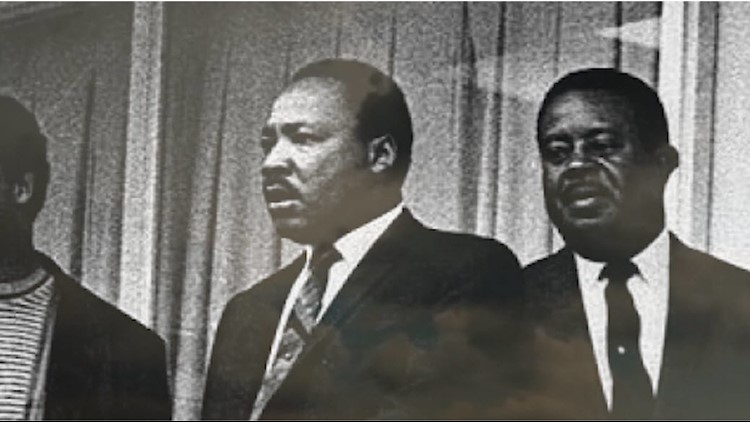Dr. Martin Luther King Jr’s many supporters often feared his message of non-violence might someday result in the most tragic of ironies – an action of deadly violence against him. Even Dr. King predicted privately, after the assassination of President John F. Kennedy, that he might meet the same fate.
Memphis-born Historian and Author, Hampton Sides, says King’s inner circle, men like Jesse Jackson and Andrew Young, were at odds about where the movement was headed and concerned about his safety. “There was a lot of dissension and debate where the movement should go in those last days,” he said.
Just a week before a sniper’s bullet took Dr. King’s life, he had been in Memphis for a march that turned into a riot.
Friend and pastor, Rev. James Netters, who was also a city councilman, experienced the violence first-hand that night. “They (teenagers) recognized me being beaten by the police and they came over and told the police ‘you’re beating a city official! You can’t beat him like that!’ And they said ‘we don’t give a damn who he is. Get him out before we really do something to him.’ They covered me with their bodies.”
So, Rev. Netters encouraged King to come to Memphis to show the world he could lead a peaceful March. “I was so fond of him. He was my mentor. He was my idol.”
On April 3rd, King left Atlanta to support the Memphis strikers. However, even before his plane could get off the ground, an anonymous bomb threat delayed the flight an hour. When the jet finally took off, King is said to have joked, ‘It looks like they won’t kill me on this flight.’
That night, King didn’t let a slight cold and spring storm with tornado warnings keep him from giving what would be his last speech at Mason Temple.
The next day, April 4th, the storms had passed. King was upbeat. And so was Rev. Netters. With a federal injunction delaying the March, Netters hoped the march might not even be necessary. In fact, less than an hour before the assassination, Netters had just secured the nine city council votes needed to settle the strike, and override a mayoral veto.
But history had something else in mind. Just before 6 o’clock Dr. King was in room 306 of the Lorraine Motel getting ready to leave for dinner. Memphis soul food was on the menu. Across the street, in Memphis Fire Station #2, undercover tact unit officers were watching things, but not expecting any trouble. And James Earl Ray was in the boarding house overlooking it all. He was unaware that the moment he expected he’d have to wait days for was about to present itself.
Dr. King’s location and even his room number had been reported in the local media. Even so, Ray must have been surprised to see Dr. King on the second floor balcony of the Lorraine Motel. The man Ray had stalked for months was suddenly an open target. There was no security detail Not a single bodyguard.
Accounts say Ray quickly got his rifle and belongings, took a few short steps from his room to the communal bathroom, and cracked open the window.
After the shots were fired, Dr. King fell to the ground. It was chaos. The images would be broadcast around the world. Rev. Netters was just blocks away. “Bedlam. I broke up (in tears). I mean, they killed my man and it took a whole lot to calm me down.”
Dr. King was pronounced dead an hour later. Our nation found itself in shock and in mourning after an unspeakable crime.
Remarkably, James Earl Ray slipped out of Memphis and the largest manhunt in U.S. history was underway. It would take 60 days to find him, discovered not in the U.S., but in a London airport. Ray was about to board a plane bound for Belgium and then Rhodesia and he almost got away with it. Few think he acted alone. Rev. Netters said, “He did it and he had help. Nobody could do that much of a crime and disappear that quickly get completely out of the country. He had a lot of help.”
Historian Sides agrees. “Money is the big question. Where did he have the money to do all this stuff? I think it’s certainly a major source of the conspiracy theories. It’s something I looked into in every possible way. I don’t know the answer to it.”
Now, 50 years later, the magic of King’s movement and the mystery surrounding his death, live on.
Although James Earl Ray confessed to killing Dr. King a year after the assassination, Ray spent the rest of his life trying to take it back. He insisted he was not the only one involved. In 1978, a congressional committee concluded it was “likely” Ray did not act alone. And before Ray died in 1998, he received unexpected support from the King family.
Dr. King’s son even met with Ray and is quoted saying he believed Ray’s denials.



